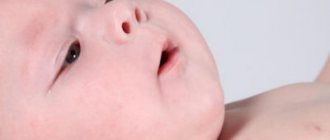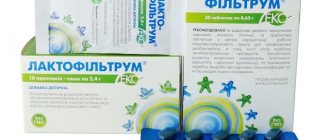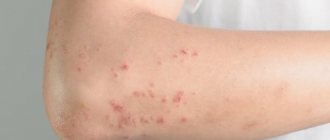The human skin serves as a filtration barrier between the body and its environment. It is his share of the first encounter with factors of physical, chemical and microbiological influence. Elastic and smooth skin can suffer from inflammatory diseases, which are caused by a lack of vitamins in dermatitis. Not only its appearance is affected, but also the reliability of the protective barrier of the entire body.
How do vitamins participate in the formation and functioning of healthy skin? Can vitamin complexes restore the previous state of an insidious disease?
The enemy of the skin is dermatitis: its types and causative factors
It does not matter on which part of the body the dermatitis occurs: the face, hands or head. To clarify the diagnosis and prescribe adequate treatment for the symptoms that appear, it is necessary to contact a dermatologist. Knowledge of the mechanisms of therapeutic and preventive effects of biologically active drugs on processes occurring in the body does not exempt you from visiting a doctor. Especially if the patient is a child.
Numerous types of dermatitis make this disease insidious. Due to similar symptoms of simple contact, allergic and chronic exacerbation, additional examination procedures and treatment adjustments are possible. Internal and external use of vitamins produces the desired positive effect as an auxiliary and concomitant therapy.
When symptoms of simple contact dermatitis occur, an absolutely healthy person is expected to be exposed to three factors:
- 1 factor – chemical (acidic and caustic substances);
- 2nd factor – physical (low or high temperature, compression, friction of a skin area);
- 3rd factor – biological (certain types of wild plants).
External manifestations depend on the area and intensity of skin contact with the irritating factor. With allergic dermatitis, symptoms appear in people with hypersensitivity after direct exposure to allergens (household chemicals and cosmetics, some ornamental plants and medications).
Main symptoms of atopic dermatitis
Atopic dermatitis is the most common chronic skin disease of an allergic nature.
The culprit of the disease is an allergen that enters the body of a potential patient in three different ways:
- food, through food;
- contact, when the skin comes into contact with toxic or synthetic substances;
- respiratory, when inhaling house dust, pollen, cosmetics, household chemicals, animal hair, cold air.
Atopic dermatitis is an inflammatory non-contagious disease. Its first symptoms appear in infancy. If by the age of 17 it is not possible to completely get rid of such an unpleasant illness, then it will certainly become chronic and will haunt the person for the rest of his life.
The course of the disease alternates between exacerbations and remissions. The acute phase is always accompanied by intense itching, dryness, peeling and severe irritation of the skin.
The patient begins a kind of running in a vicious circle: itching, scratching, rash and again unbearable itching. As a result, the patient’s body becomes covered with small erosions, when scratched, pustules appear. And a secondary bacterial, fungal or viral infection joins the existing dermatitis.
The connection between vitamin deficiency and dermatitis
An amazing fact: vitamins, as active participants in all oxidative and reduction reactions in the body, carry a saving mission for dermatitis. Very often, the main cause of inflammatory skin disease lies in chronic vitamin deficiency. At the same time, with a high concentration of biologically active substances, pseudo-allergic manifestations are possible. An excess of chemical elements such as copper or iron, included in multivitamin complexes, can provoke a deterioration in the condition of the skin. A correctly selected dosage of medications by a doctor will help avoid a whole “bouquet” of problems.
Vitamin deficiency is caused by:
- poor diet. People suffering from allergic manifestations are forced to prevent the entry of food allergens into the body by reducing the variety of their diet, depending on the identified allergen. The choice of food is purposefully depleted, often due to fats (oils, meat and dairy products) and in a person seeking to reduce calorie intake. Some people do not receive enough nutrients due to social, subjective reasons;
- diseases of the gastrointestinal tract, dysbacteriosis;
- alcohol abuse.
Vitamins of groups A, D, E and K are fat-soluble, coming from outside. The overall result for all reasons for their deficiency is that:
- there are not enough chemical compounds in the body for the full-fledged action of vitamins;
- the mechanism of their absorption and transportation is disrupted.
Water-soluble vitamins C, H, group B, folic (BC) and nicotinic (PP) acids are responsible for the cellular immunity of the skin, its protective functions; with a lack of these vitamins, the cellular reactions occurring in it are distorted.
Seborrheic Dermatitis: Dandruff Strikes Back
Today, the causative agent of seborrhea has been precisely identified and the principles of its treatment have been developed. The main thing is not to make a mistake in diagnosis
I was asked to write about seborrheic dermatitis: where does this scourge come from and what to do about it. However, while preparing the material, I discovered that even textbooks for doctors present outdated views on the problem. Therefore, I willingly fulfill the wishes of readers, simultaneously presenting a modern view of the causes of the disease. Today, the etiology (cause) of seborrheic dermatitis has already been established - there is a specific pathogen.
Symptom pattern
Each moment of the diagram, with the help of which the course of dermatitis can be represented, has a different degree of intensity and an individual speed of passage of a certain stage of the disease:
Itching = redness = swelling = formation of blisters = bursting blisters = formation of weeping sores = drying out crusts, cracks or flakes of skin = bluish-pink spots or formation of scars, ulcers, erosions.
With allergic dermatitis, the last stage of symptoms is not typical.
Signs of atopic dermatitis
The leading symptom of atopic dermatitis is severe itching. The skin with atopic dermatitis, especially during the dormant period (remission), is dry and flaky.
The skin of the trunk and extensor surfaces of the limbs is covered with shiny, flesh-colored plaques.
During the dormant period, the only minimal manifestations of atopic dermatitis may be barely flaky spots or cracks in the area where the earlobe is attached.

In addition, such signs may include seizures in the corners of the mouth, a median crack in the lower lip, as well as peeling and redness of the upper eyelids. Blue under the eyes, pale facial skin with an sallow tint can be important signs of an atopic personality.
Vitamins in the treatment of dermatitis
The first and main point of treatment is to eliminate contact with the factor or allergen (group of allergens) that causes such a reaction in the body. Sometimes this is difficult to do due to the need to perform complex tests: determining specific immunoglobulins or blood antibodies.
In addition to antiallergic medications, antibiotics and antiseptics prescribed by a dermatologist, the doctor is responsible for choosing multivitamin and mineral complexes that stimulate the healing of skin defects and strengthening weakened immunity. In case of severe painful manifestations of dermatitis, the patient is usually treated in a hospital setting.
The entire line of preparations based on Panthenol (creams, ointments, sprays), which promote the healing of the affected layers of the dermis, have proven themselves to be the best. The tested product contains vitamin B, more precisely, B5 or, as it is also called “beauty vitamin”. The texture of Panthenol cream is more delicate than ointments, so it is successfully used in cosmetology for the face and neck.
Vitamin B6 (pyridoxine) is also called anti-dermatitis. Its intramuscular injections are prescribed at a dosage of 0.01 grams per day. In tablet form for oral administration, 1 tablet 3 times a day.
Plants rich in vitamins provide effective help to affected skin. Connoisseurs of traditional medicine recipes recommend using the juice of grated carrots, water tincture of horseradish or raspberries for external use for dermatitis.
Causes of atopic dermatitis
The term atopic indicates the body's genetic predisposition to allergic reactions. But even among healthy parents, the probability of having a child with this pathology is 20%.
Therefore, in addition to the hereditary cause, there is a problem associated with weak skin immunity, which, under the influence of any of the listed factors, can trigger the development of the disease:
- excessive psycho-emotional stress;
- psychological disorders;
- autumn-winter period;
- mental stress;
- endocrine system disease;
- respiratory diseases;
- pathology of the gastrointestinal tract;
Provoking causes of an allergic reaction, especially in children, include poor ecology, sudden climate change, poor diet, and disturbances in sleep and wakefulness.
Forms and methods of application
There are several ways to use vitamins for the effective treatment of dermatitis: injections, multivitamin preparations, ointments and creams containing them. I will say right away that with any form of this disease you should not experiment with folk recipes. Homemade masks can only intensify symptoms and provoke violent allergic reactions.
Injections
Intramuscular or subcutaneous injections of vitamins are prescribed to relieve the acute form of the disease. Vitamins B6 and B12 are usually prescribed as powerful anti-inflammatory agents. Their dosage is determined according to the instructions. The drugs themselves alternate every other day.
The course of such treatment is from 7 to 10 injections each. The total duration is from 2 to 3 weeks. Such injections are well tolerated. In adults, hardening may occur at the sites where vitamins were administered, so it is advisable to lightly massage them. In children, due to increased metabolism, they dissolve faster, and this problem rarely occurs.
Pyridoxine is contraindicated in case of serious liver problems, coronary heart disease, stomach or duodenal ulcers. Cyanocobalamin – for erythrocytosis, angina pectoris, neoplasms, megablastic anemia.
In rare cases, if the patient is severely weakened, injections of ascorbic acid may be additionally used. More often it is prescribed in oral form. For injections, use an aqueous solution of vitamin C in ampoules. Contraindications to them are increased blood clotting, malignant neoplasms, renal failure, and various forms of anemia.
Taking multivitamin complexes for dermatitis is useful. But it is better to choose them only together with an observing doctor, so as not to provoke an allergy. Most often, doctors recommend the following drugs:
- Stress B-Complex from The drug helps to quickly get rid of dermatitis caused by strong emotional stress or stress. Contains almost the entire group of B vitamins, ascorbic acid, folacin and para-aminobenzoic acid - an important hematopoietic factor that provides cells with a sufficient amount of oxygen.
- Complex of natural B vitamins from Fitne. The basis of the composition is 8 main B vitamins. Additional ingredients: vitamins C and A, minerals and trace elements, crushed wheatgrass, quinoa and spirulina. Herbal supplements help strengthen the immune system, cleanse the blood and blood vessels, and help eliminate toxins.
- "Perfect Original" from Vitabiotics. The complex, highly effective drug is a balanced combination of vitamins, minerals and plant extracts. It contains vitamins D, E, C and almost the entire group B, nine minerals and trace elements, grape seed extract. Just one tablet a day after a month helps to significantly improve the condition of the skin and reduce the appearance of dermatitis.
- Vitamin complex for women from “Superia”. Contains vitamins B, A, C, E, many minerals and trace elements. The drug was developed specifically for women, taking into account the characteristics of their body. It has a great effect not only on the condition of the skin, but also helps strengthen nails and hair.
- Beauty complex "Perfect Beauty" from "Amrita". It contains all the vitamins useful for dermatitis: A, C, E, group B, a vitamin and mineral block with a high content of zinc and selenium. Its effect is enhanced by the presence of valuable plant extracts: grape seeds, pomegranate, flax seeds, sprouted wheat grains. Helps well with seborrheic dermatitis.
How to treat seborrhea on the head
When an inflammatory process occurs on the head as a result of an increase in sebum, it is called seborrhea or seborrheic dermatitis. More often, the disease begins in adolescents during puberty, and its manifestations can be observed throughout life. Doctors have not found the answer to what is the cause of the development of seborrheic dermatitis, but it is known for certain that the pathology is caused by staphylococcus bacilli, hormonal disorders, disruptions in the gastrointestinal tract or genetic factors.
Treatment of seborrhea of the scalp is a long and complex process. It is extremely important to undergo a treatment course under the supervision of an experienced doctor. It is equally important during the therapy period to properly care for the scalp using pharmaceutical products. Doctors recommend normalizing the process and relieving the symptoms of seborrheic dermatitis according to the following scheme:
- regularly train the body with physical activity: hardening, walking, swimming in open water;
- undergo a course of physiotherapy;
- take medications containing vitamins A, B, E, D and minerals: sulfur, zinc;
- adhere to a special diet;
- in severe cases, undergo hormonal therapy;
- cure all chronic diseases in the body.

Diet for seborrheic dermatitis on the head
By following a therapeutic diet, the intestines are cleansed of harmful substances, the body is saturated with necessary microelements, and overall immunity is increased, which does not allow bacteria to multiply. The diet for scalp seborrhea includes split meals every 2-3 hours in small portions. The basis of the diet for the treatment of seborrheic dermatitis are:
- dairy products;
- vegetables, berries, fruits;
- lean meat (chicken, turkey, rabbit);
- clean water, freshly squeezed juice, berry and fruit juice, herbal tea;
- low-fat fish;
- cereals, cereals.
- alcohol;
- carbonated drinks;
- nonalcoholic beer;
- canned food, marinades, semi-finished products;
- fatty, fried foods, fast food;
- semolina;
- potato;
- bakery products.
Drug treatment of seborrhea of the scalp
Seborrheic dermatitis is not only an independent disease, but also a sign of other ailments. To establish an accurate diagnosis, when seborrhea of the scalp appears, you need to contact an endocrinologist, neurologist, gynecologist, or dermatologist. To eliminate the main symptoms, the following drug treatment for seborrheic dermatitis is used:
- medications that restore the functioning of the autonomic nervous system (Pantocrine, Diazepam);
- probiotics (Linex, Riabal);
- medications that correct the functions of the immune system (Imunofan, Geviran);
- hormonal drugs (Sinaflan, Celestoderm);
- mineral and vitamin complexes (Undevit, Triovit).

Shampoo for seborrheic dermatitis on the head
In the complex treatment of seborrheic dermatitis, the use of shampoo that can kill pathogenic fungi and eliminate flaking on the scalp is indicated. The effect of the antifungal drug is local, which helps to avoid side effects. You need to keep medicated shampoo for seborrheic dermatitis on your head for 3-5 minutes so that its components have time to have a therapeutic effect. Effective anti-seborrhea products are made based on the following active ingredients:
- ketoconazole (Sebazone, Nizoral);
- medical tar (Sebuton, Psorilom);
- zinc pyrithione (Danex, Friederm Zinc);
- Selenium sulfide (Sulsen-Forte, Sulsena).
Darsonval for seborrhea of the head
Darsonvalization is electrotherapy with pulsed current with a high voltage of 20-40 kV at a frequency of 110-140 kHz and a low power of 0.015-0.2A. Treatment of seborrheic dermatitis of the scalp using the Darsonval method in combination with other techniques gives excellent and long-lasting results. The essence of the therapy is the effect on the scalp of an electric current, which irritates the sebaceous glands, blood vessels and receptors, causing a rush of blood. The Darsonval device for seborrhea is good because it improves metabolism at the cellular level and normalizes the acid-base balance.
Prevention
An important place in treatment is the prevention of reappearance or exacerbation of chronic dermatitis. To do this, you must adhere to the following rules:
- constantly improve immunity;
- Avoid contact with allergens as much as possible;
- wear clothes and use bedding only from natural materials;
- remove chocolate, smoked meats and foods high in chemical additives from the diet;
- always have antihistamines on hand;
- use cosmetics for sensitive skin.
To improve the condition of the epidermis and avoid vitamin deficiency, it is recommended to take a course of high-quality multivitamin preparations 2-3 times a year.
How vitamins can help
Vitamins can do a lot, but not everything. In particular, they are unable to completely remove the causes of dermatitis and cure this disease. But they can ease its course and contribute to the speedy restoration of the skin. Particularly important during this period is the increased presence in the body of:
- Vitamin A. Eliminates dryness and flaking of the skin. Regulates the activity of the sebaceous glands. Promotes accelerated cell regeneration. Helps fight seborrheic dermatitis.
- Vitamin D. Strengthens the immune system, protects the skin from negative external influences, has a calming and anti-inflammatory effect. Responsible for the correct life cycle of the cell.
- Vitamin C. Helps damaged skin recover quickly and restore its elasticity, stimulating the process of collagen production. Lightens, prevents the appearance of post-traumatic pigmentation.
- Vitamin E. Neutralizes the harmful effects of free radicals. Accelerates the healing of wounds and cracks. Stimulates tissue regeneration.
- Vitamin K. Improves blood microcirculation. Provides cells with oxygen. Eliminates the manifestations of rosacea and strengthens the walls of capillaries. Relieves redness and inflammation.
- Folic acid. Natural factor of growth and development. Promotes the formation of healthy, viable cells. Increases skin elasticity.
- Nicotinic acid. Accelerates subcutaneous blood circulation, improves cellular nutrition. Eliminates inflammation and peeling of the epidermis.
- Panthenol. It has an anti-inflammatory effect. Promotes rapid healing of areas affected by dermatitis. It relieves itching and redness well.
- Pyridoxine. It is called an anti-dermatitis drug, since it dramatically alleviates the course of the disease when administered intramuscularly.
B vitamins in general are catalysts for most metabolic processes occurring in the body. They help regulate the hydrolipid balance and directly affect the condition and appearance of the skin.
Significant results can be obtained with the correct use of vitamin D. It has been experimentally proven that its constant intake in a slightly increased dose alleviates the manifestations of atopic dermatitis in 98% of cases.
Dermatitis on hands
Dermatitis on the hands is a common skin disease that is accompanied by unpleasant symptoms. The pathology is characterized by severe itching, the appearance of itching and rash on the skin. The skin becomes severely inflamed, and pain in the area of the dermis is possible. The disease occurs in both small and large patients.
The cause of development can be various external factors affecting the human body. What other features does dermatitis have?
Causes of dermatitis
Dermatosis manifests itself in the form of an allergic reaction to external irritants. The main factors provoking the development of pathology include:
- Physical - abundant contact with water, temperature and pressure surges, sun rays and radio emissions.
- Biological - interactions with plants such as garlic, nettle, ash.
- Chemical – interaction with chemicals: varnish, paint, household chemicals, acid.
- Obligate – mineral acids, alkalis, toxic substances.
Dermatitis on the elbows can also be triggered by other irritants:
- Poisonous, toxic substances transmitted by airborne droplets, plant pollen.
- Cosmetics for skin care.
- Allergenic products containing dyes and preservatives.
- Psychological factor (emotional instability, stress, depression).
- Taking antibiotics and dietary supplements.
Be careful, sometimes removing external signs does not help to completely get rid of the problem. Inside the body, the disease can rapidly progress and affect the autoimmune system.
Because of this, severe pathologies that are dangerous to human health can develop.
Dermatitis can cause the development of a cancerous tumor, so do not delay treatment and go to the hospital in a timely manner.
In addition, often the cause of the development of dermatitis is a hereditary factor. It is for this reason that the disease can appear in infancy. It will be chronic. In this case, it is better to protect the patient from factors that provoke the progression of the disease.
Remember! Upon initial contact with the irritant, no visible signs appear on the body, as the body quickly begins to produce antibodies that fight the allergen. Regular contact with an irritant provokes a severe allergic reaction that affects the skin and immune system.
Symptoms of dermatitis
The development of pathology is accompanied by the manifestation of visible symptoms. Dermatitis on the fingers is characterized :
- The appearance of redness in the area of irritation.
- Hands swell.
- In severe cases of pathology, watery blisters with cloudy liquid appear on the body.
- After the blisters burst on the skin, erosive areas appear on the dermis.
- Severe itching.
- Dry hands.
- Crust on damaged areas.
- A bluish area of the dermis.
Simple contact dermatitis in the normal course of the disease does not cause complications. The only thing that can happen in this case is severe damage to the skin. There may be scars or welts on your hands. In some cases, pigmentation or calluses may appear.
With prolonged development of the disease and exposure to the allergen, severe complications and consequences are possible. If proper treatment is not started, then the formation of necrosis, deep damage to the epidermis, infectious or viral infection, and the development of fungus are possible. In severe cases, the development of eczema and sepsis is possible.
Types of dermatitis on the hands
Depending on the factor affecting the body, hand dermatitis is divided into several types:
- Simple contact dermatitis on the hands. External manifestations appear on areas of the skin that have been in contact with the allergen. The development of the disease subsides when protected from the irritant.
- Atopic form. This type is caused by a hereditary factor. This form of allergic dermatitis on the hands is characterized by the appearance of specific neoplasms on the skin.
- Actinic type. It is characterized by damage to the dermis of the hands due to regular contact with different types of radiation.
- Seasonal. It is divided into two types: solar lichen (manifests itself with prolonged contact with the sun's rays), cold eczema (an allergic reaction that develops during cold weather, the skin begins to dry, itch and crack).
- Allergic type. The body's reaction to external irritants in the form of cosmetics, chemicals, paint, toxic substances.
The duration of treatment, the drugs used and further prognosis will depend on the type of pathology. Most often, patients are diagnosed with contact and allergic types of pathology. To find out the nature of the disease, you should undergo a diagnostic examination and be tested for allergens.
How to treat dermatitis on the hands
Only a doctor can tell you how to treat dermatitis on the hands of children and adults. Therapy should be beneficial and not harmful to the person. Therefore, self-medication in this case is strictly contraindicated.
The task is not to delay a visit to a dermatologist.
Before prescribing treatment, it is necessary to undergo a complete examination. Tests will help determine what type of disease the patient has. After diagnosis, the attending physician prescribes a course of therapy and prescribes the necessary medications. Typically, therapy lasts for 7-10 days, with conservative treatment. If the problem is neglected, purulent ulcers may appear on the hands.
Non-hormonal drugs
Most often, a cream or ointment for dermatitis on the hands is used to eliminate visible symptoms. The most popular and effective means include:
- “Zorka” is available in the form of a cream and is made from natural plant ingredients. Helps restore damaged areas, softens and nourishes the upper layers of the dermis.
- "Eplan" is a cream with a pronounced antiseptic effect, it disinfects the skin well and heals wounds.
- “De-panthenol” is available in the form of cream and spray. Well softens and heals the dermis, helps quickly eliminate cracks and wounds.
- Exoderil cream is prescribed for infectious types of pathology.
- "Radevit" - a product in the form of an ointment is used to treat inflammatory areas and severe itching, relieves irritation.
- "Gistan" is a dietary supplement, taken orally, used to strengthen the immune system.
- "Losterin" is an antifungal ointment that helps eliminate signs of dermatitis.
- "Desitin" - ointment has an antiseptic and analgesic effect. Quickly relieves pain, itching and irritation.
- "Skin-Cap" is an antifungal ointment that eliminates germs on the skin and prevents the development of eczema.
All drugs are non-hormonal. Therefore, they are approved for use by children and adults. It is prohibited to use medications without the knowledge of the attending physician, as there is a risk of harming the body and aggravating the situation.
Hormonal drugs
In severe cases of the disease, hormonal drugs can be used. This group of medicines includes:
- "Celestoderm" is an ointment based on glucocorticosteroids, used for the treatment of contact type of pathology that manifests itself on the hands.
- Advantan is a medicine used to treat skin hypersensitivity or dermatosis.
- "Flucinar" is used in the treatment of dry dermatitis of non-infectious origin.
Treatment in children
Treatment of dermatosis in children takes place in several stages. It is carried out with extreme caution, since children's skin is very sensitive and delicate. The child is protected from the irritant, the damaged areas are smeared with healing ointments or powder. It is also recommended to regularly carry out preventive measures.
Depending on the clinical picture and course of the disease. The patient may be prescribed sedatives to facilitate the course of therapy. Children should be prescribed medications by a pediatrician, as some products are not suitable for children's skin.
During exacerbation
In case of exacerbation of the chronic form of the pathology, traditional healing methods can be used in combination with healing ointments and gels. You can use chamomile tinctures, lotions or herbal baths to relieve pronounced signs of the disease. They effectively relieve visible signs of the disease, however, they do not help get rid of the allergen from the inside.
Prevention
The most effective prevention is to protect the patient from the irritant. If there is no contact with the allergen, then there will be no reason for the development of the disease.
Experts also recommend adhering to the following recommendations:
- In contact with household chemicals, harmful substances, paint, etc. Wear protective gloves on your hands.
- When choosing cleaning products and detergents for personal hygiene, choose brands with the most gentle composition. The fewer impurities in the product, the better.
- Choose laundry detergents, soap, and personal hygiene products for children. They are not allergenic and do not dry out the skin.
- When you are outside in cold weather, wear warm gloves and mittens. Don't let your skin freeze.
- To protect your hands from ultraviolet rays, apply moisturizer or sunscreen to your hands before going outside.
- Choose hand soap with a moisturizing effect.
- Apply moisturizing and nourishing cream to your hands daily, morning and evening.
- As a preventive measure, make baths with yarrow or chamomile infusion once a month.
So that your hands are always soft and gentle. Use moisturizers designed for brushes. Treat the skin on your hands with care, as it is very sensitive and requires additional care. You should only wash dishes and come into contact with harmful substances wearing protective gloves!
Dermatitis is a disease that can occur in any person upon contact with various irritants. The disease is highly treatable and rarely causes severe complications. Therefore, when the first signs of the disease appear, you should consult a doctor and begin conservative treatment. Only timely treatment can protect you from possible health problems.
Dermatitis on the hands Link to main publication
Source: https://infokozha.ru/dermatit/dermatit-na-rukah
Sample menu for the day
When creating a dietary menu, you need to follow a few simple but very important rules:
- It is recommended to add fish and meat dishes to the diet no more than 2 times a week. This is necessary to prevent overload of the liver and other gastrointestinal organs;
- try to add variety to the menu so as not to cook the same dishes every day;
- powdered milk, packaged soups and other “artificial” products should be abandoned;
- eat in small portions;
- It is recommended to drink water no earlier than an hour after eating.

For a clear example, below is an example of a daily menu prescribed for dermatitis. When compiling a diet, you can build on it.
Table. Menu for seborrheic dermatitis.








